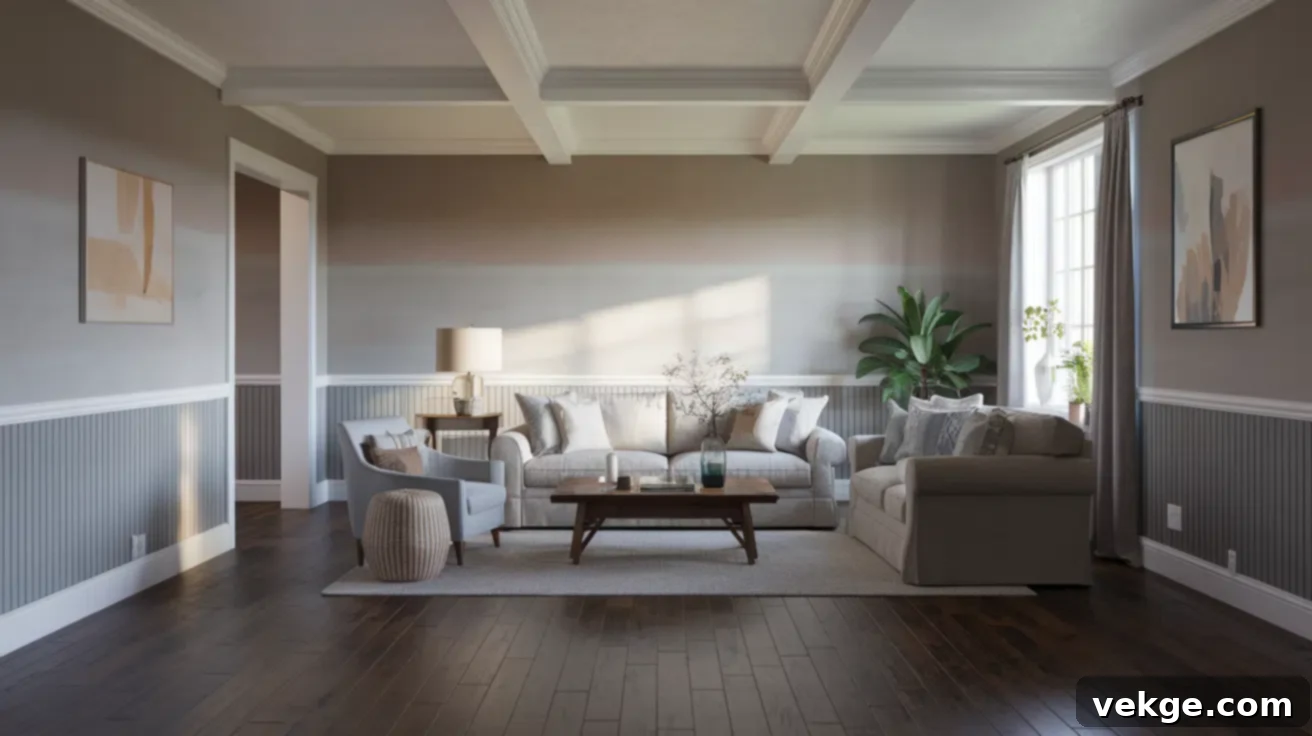The Ultimate Guide to Wall Colors for Dark Brown Floors: From Light & Airy to Bold & Dramatic
Choosing the perfect wall color when you have dark brown floors can feel like a significant design challenge. While dark floors inherently offer a sense of luxury, grounding, and sophistication, selecting the wrong wall shade can inadvertently make a room feel heavy, small, or even uninviting. The rich, deep tones of dark wood flooring demand thoughtful consideration to ensure the entire space feels cohesive, balanced, and visually appealing.
This comprehensive guide is designed to simplify that process for you. We’ll explore a curated selection of wall colors, offering simple yet impactful ideas that can transform your space. Whether your goal is to brighten the room and create an airy atmosphere, infuse it with comforting warmth, or establish a bold and dramatic contrast, you’ll find inspiration here. We’ll delve into how specific colors interact with the inherent warmth and depth of dark brown, helping you make an informed decision.
Beyond just color suggestions, we’ll also share essential paint tips and smart lighting tricks. These elements are crucial for ensuring your walls and floors work harmoniously together, enhancing the overall aesthetic of your home. No matter if your personal style leans towards soft and neutral elegance, or if you prefer a more modern and striking aesthetic, this guide provides actionable advice and a diverse palette to suit your taste. Get ready to discover which wall colors truly shine when paired with dark brown flooring!
Why Dark Brown Floors Are a Timeless Interior Design Choice
Dark brown floors, particularly those crafted from rich hardwood, bring an unparalleled sense of warmth, elegance, and visual depth to any space. Few other flooring options can match their profound impact. Their deep, coffee-toned, or chocolate-hued surfaces create a solid, stable foundation that not only anchors furniture beautifully but also imbues rooms with a distinct character and sophisticated charm. The natural variations in wood grain become more pronounced and luxurious against a darker stain, adding an organic yet refined texture to your home.
While it’s true that dark brown floors can be more challenging to maintain, often showing dust and scratches more readily than lighter alternatives, their classic appeal and enduring style make the effort worthwhile. Dark hardwood effortlessly complements a wide range of interior design aesthetics, from timeless traditional and rustic farmhouse to sleek modern and minimalist. They act as a versatile backdrop, allowing furniture, art, and decor to truly pop.
When strategically paired with thoughtful lighting design and intelligent color choices for your walls, dark brown floors transform ordinary spaces into extraordinary ones. They offer a sophisticated contrast that adds dimension and interest, making rooms feel both grounded and inviting. Understanding their inherent qualities is the first step to unlocking their full potential in your home’s design.
Top Wall Colours that Beautifully Complement Dark Brown Flooring
The right wall color can dramatically alter the perception of a room with dark brown floors. Lighter shades tend to reflect natural light, creating an airy and spacious atmosphere, while darker, richer tones can add drama and coziness. The key is to find a shade that balances the visual weight of the dark flooring, enhancing its richness without overwhelming the space. Here are 21 fantastic options:
1. Creamy White
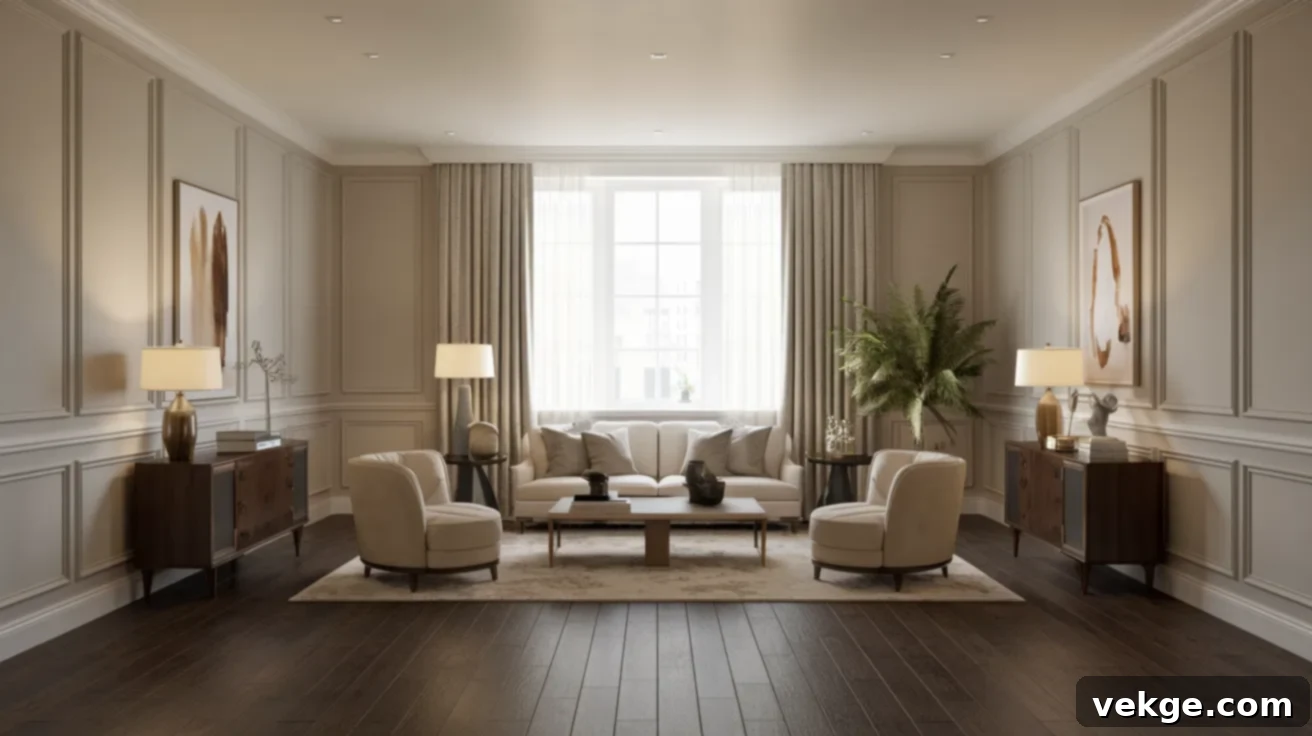
Creamy white walls are a popular choice for softening the inherent contrast with dark brown floors. Unlike stark, pure white, creamy shades offer subtle warmth through gentle yellow or beige undertones. This creates a clean, sophisticated, and inviting backdrop that prevents the room from feeling cold or overly clinical. The warmth in creamy whites beautifully complements the natural wood grain patterns, allowing your furniture, artwork, and decorative elements to truly stand out.
This versatile neutral is particularly effective in rooms with limited natural light, as it diffuses illumination gracefully without creating harsh glare or washing out the space. It helps to bounce light around the room, making it feel brighter and more open while maintaining a cozy ambiance. Creamy white is ideal for living rooms, bedrooms, and even hallways where you want a sense of elegant simplicity and spaciousness.
2. Soft Beige
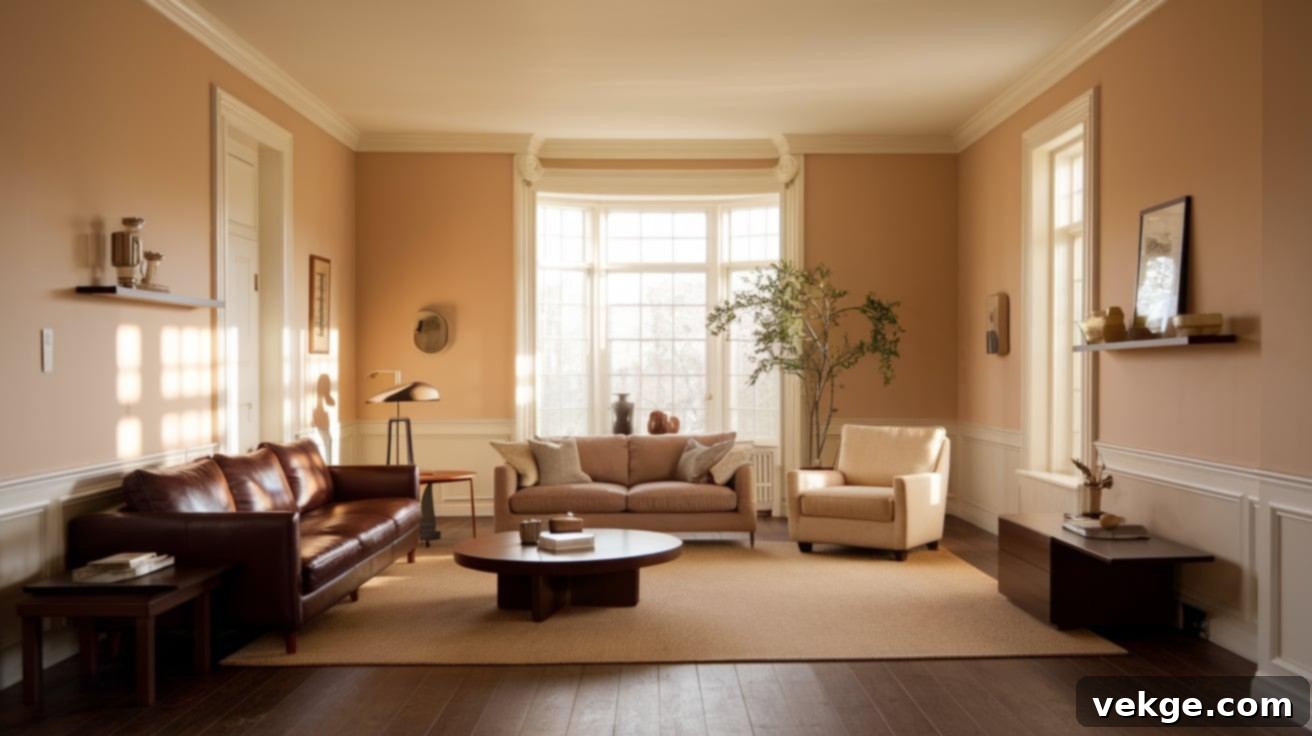
Soft beige offers a natural and harmonious companion to dark brown floors, establishing a cohesive visual flow throughout your space. This versatile neutral excels at enhancing the inherent warmth of wood tones without ever competing for attention, making it a reliable choice for a balanced interior. Beige walls create a calm and inviting atmosphere, allowing architectural details and your chosen decor to shine subtly.
Compared to pure whites, soft beige introduces a greater sense of depth while remaining light enough to ensure rooms feel spacious and open. It’s an excellent option for creating a timeless and understated elegance. Consider soft beige in family rooms, dining areas, or studies where comfort and continuity are paramount, effortlessly bridging the gap between your dark floors and the rest of your decor.
3. Light Taupe
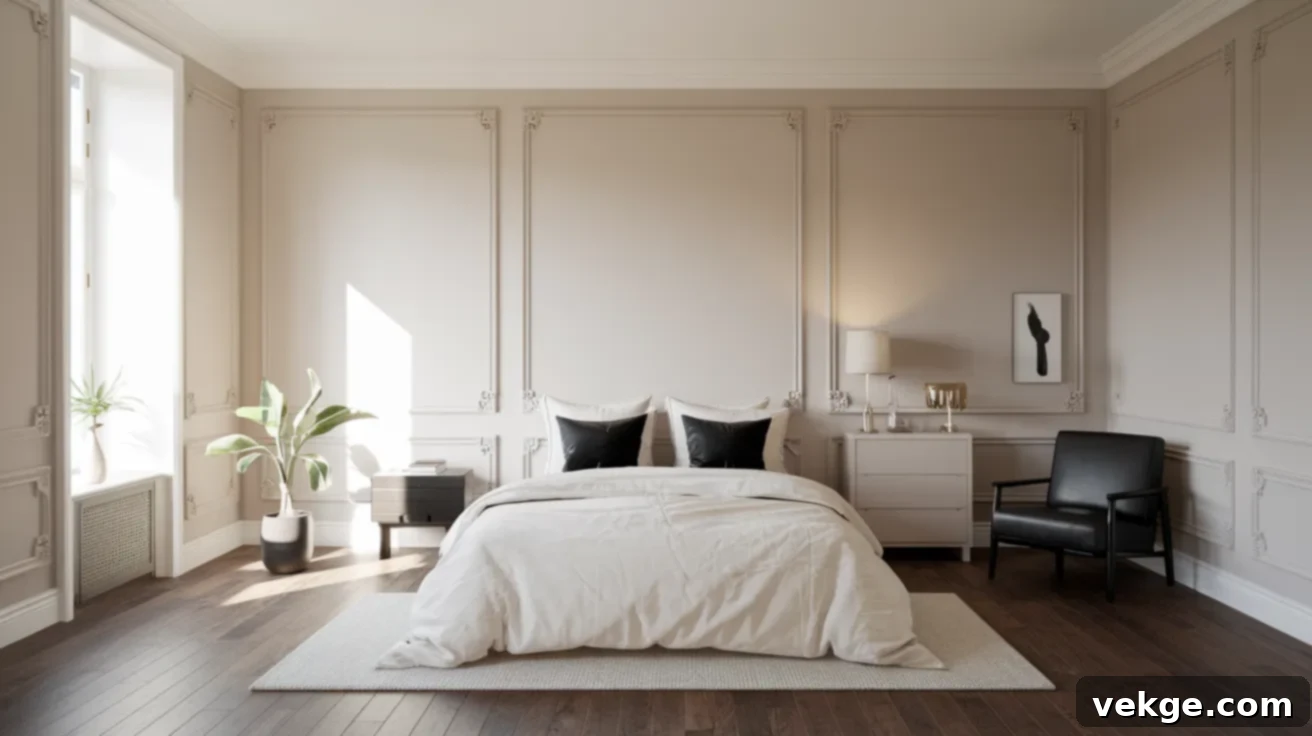
Light taupe masterfully strikes a perfect balance between grey and beige, offering a sophisticated neutral that brings both modern style and comforting warmth. This complex shade complements dark floors by subtly picking up various undertones present in the wood, creating a rich, layered effect. Taupe adds visual interest without overwhelming the space, making rooms feel simultaneously cozy and expansive.
One of taupe’s most appealing qualities is its chameleon-like ability to shift slightly throughout the day as natural light changes. This adds dynamic dimension to your walls while maintaining an overall light and airy appearance. It’s an excellent choice for creating an elegant, understated backdrop in virtually any room, from living areas to bathrooms, providing a versatile canvas for diverse design styles.
4. Pale Grey
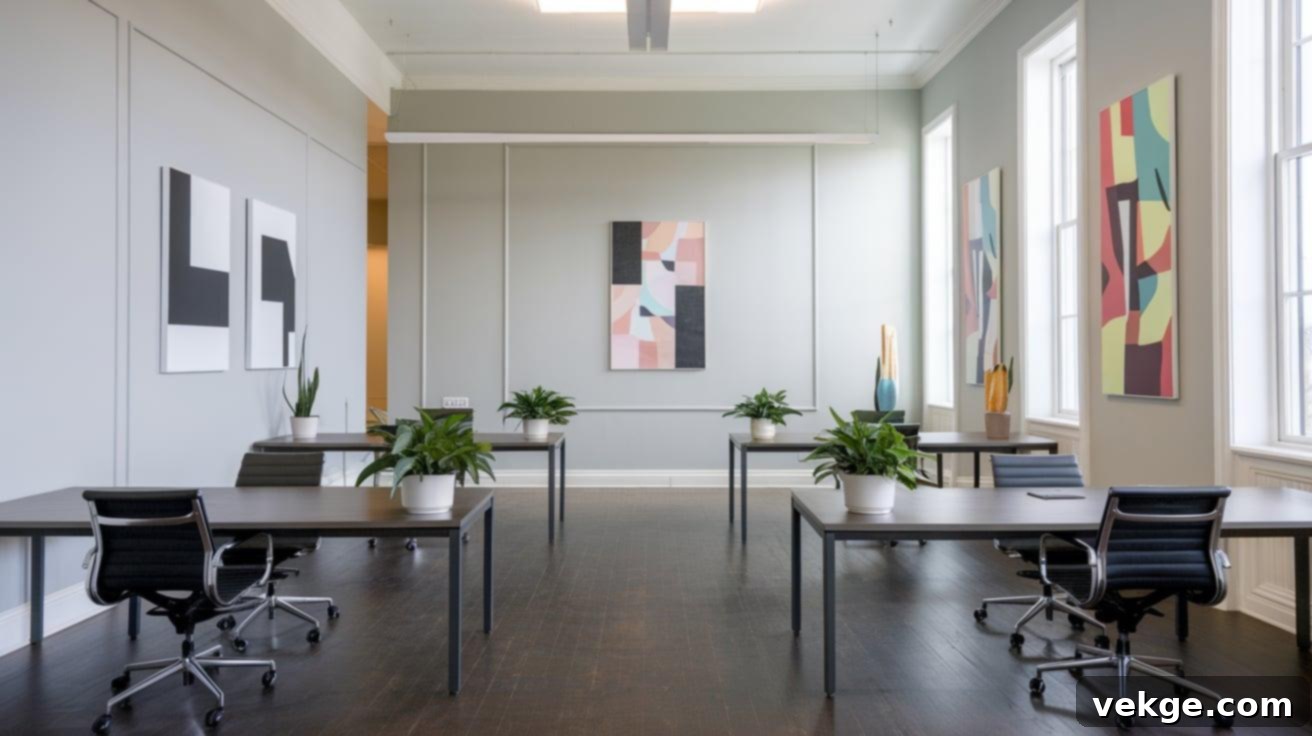
Pale grey introduces a distinctly contemporary feel to rooms, providing a crisp, clean contrast to the grounding presence of dark brown flooring. This cool-toned neutral serves as a modern canvas, allowing your furniture, artwork, and decorative elements to be highlighted as focal points. The subtle blue or green undertones often found in pale greys provide a refreshing balance to the inherent warmth of brown floors, preventing the space from feeling too heavy or traditional.
This pairing works exceptionally well in rooms blessed with ample natural light, where the grey can truly showcase its multi-dimensional qualities and sophisticated coolness. It’s a fantastic option for creating a sleek, minimalist aesthetic in living rooms, offices, or bedrooms, offering a serene and chic environment that feels both fresh and inviting. Pale grey is a testament to modern elegance when combined with dark wood.
5. Warm Greige

Warm greige elegantly blends the best qualities of both grey and beige, resulting in a perfectly balanced neutral that is exceptionally complementary to dark brown floors. This hybrid color introduces subtle depth to your walls while consistently remaining light enough to visibly open up the space. Warm greige is renowned for its adaptability, shifting beautifully with changing light conditions—appearing warmer and more inviting at sunset, and subtly cooler and crisper during daylight hours.
The inherent complexity of warm greige creates a sophisticated background that feels intentional and carefully considered, rather than merely neutral. It harmonizes effortlessly with the various brown tones found in your flooring, creating a polished and cohesive look. Ideal for open-plan living areas or any room where you desire a refined and versatile atmosphere, warm greige offers both comfort and contemporary appeal.
6. Sage Green
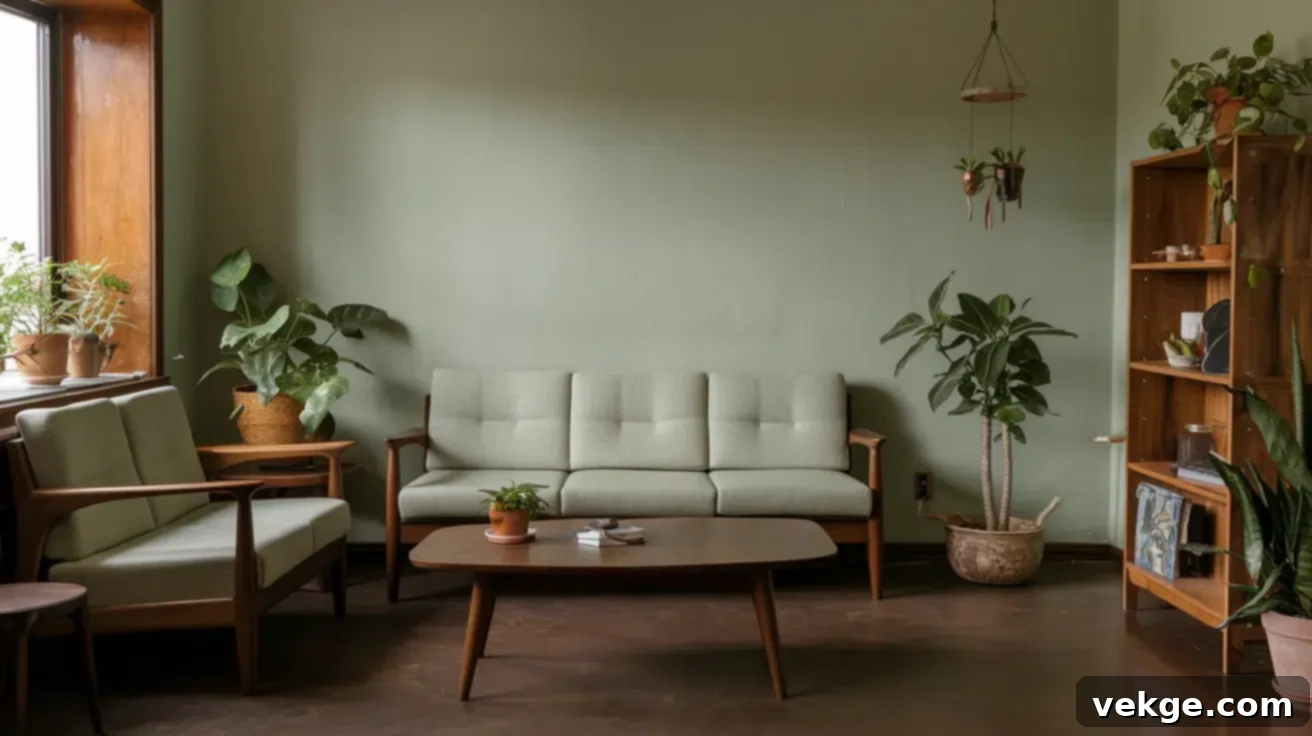
Sage green introduces a captivating, nature-inspired hue that complements dark brown flooring without ever competing for visual dominance. This muted, earthy green creates an incredibly calming and serene backdrop, making the space feel both fresh and deeply grounded. The natural, organic quality of sage harmonizes exquisitely with the warmth of wood tones, adding a subtle yet distinct contrast that enriches the overall palette.
Rooms adorned with sage green walls and dark floors exude a beautifully balanced and connected-to-nature ambiance, yet without the intensity or vibrancy of brighter greens. It’s an ideal choice for bedrooms, bathrooms, or sunrooms where a tranquil, restorative atmosphere is desired. Sage green truly brings the outdoors in, creating a peaceful sanctuary in your home.
7. Sky Blue

Sky blue walls are excellent for creating an expansive, open, and airy feeling that provides a stunning contrast to the grounding effect of dark brown floors. This gentle, often ethereal blue mimics the vastness of the sky, visually raising ceiling heights and making rooms feel considerably larger. The cool undertones inherent in sky blue offer a perfect balance to the warmth of dark wood, establishing a dynamic yet profoundly harmonious relationship within the space.
Sky blue encourages relaxation and tranquility, making it an ideal choice for bedrooms, bathrooms, or even home offices where a calm, focused environment is beneficial. Despite its soothing nature, it maintains enough color presence to inject personality and a refreshing vibrancy into the room. This pairing suggests a modern yet serene aesthetic, bringing a breath of fresh air to your interior design.
8. Dusty Rose
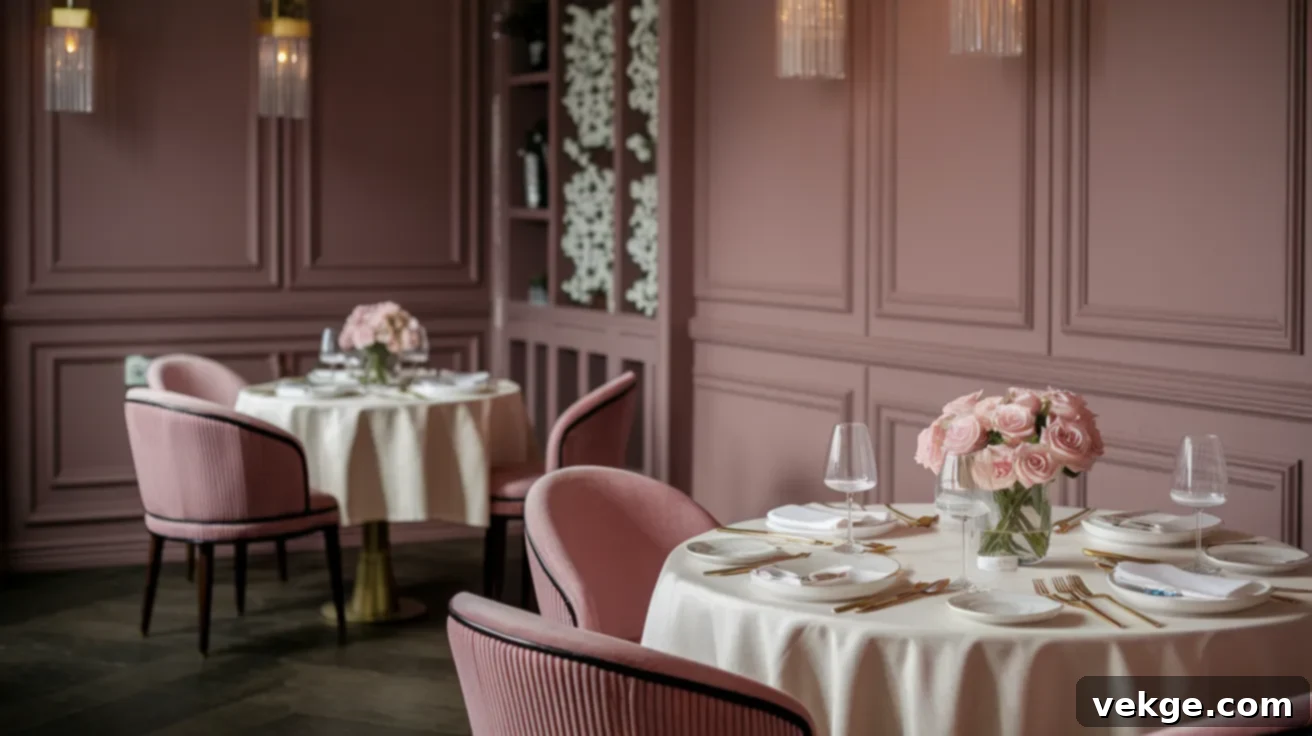
Dusty rose offers an unexpected yet delightful warmth that beautifully enhances dark brown floors without ever overwhelming the space. This muted, sophisticated pink casts a subtle, flattering glow that not only complements various skin tones but also imbues the room with a welcoming and comforting ambiance. It’s a color that speaks of gentle luxury and understated charm.
This unique shade works particularly well in bedrooms, dining areas, or powder rooms, where its gentle presence can foster a sense of intimacy and comfort. When thoughtfully paired with dark floors, dusty rose transcends typical pastel applications, gaining a new layer of sophistication and depth. It creates an inviting and stylish interior that feels both modern and timelessly elegant.
9. Terracotta
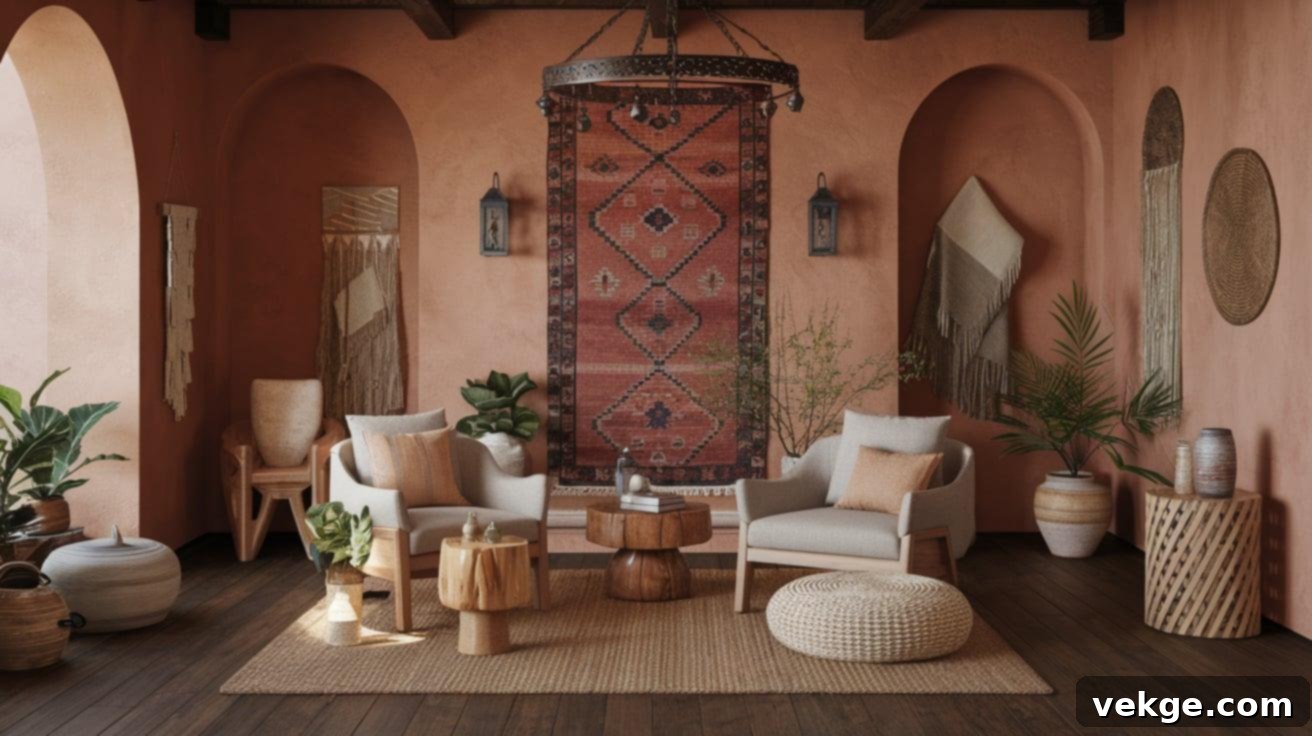
Terracotta walls immediately bring a touch of Mediterranean warmth and rustic charm, perfectly complementing the inherent richness of dark brown flooring. This earthy orange-brown hue creates a natural cohesion through its color family, while still providing enough contrast to define distinct spaces within a room. The natural clay tone of terracotta feels timeless and authentic, rather than fleetingly trendy, making it equally effective in both traditional and contemporary settings.
Terracotta is particularly adept at adding a cozy, sun-kissed warmth to north-facing rooms that might otherwise feel cool. Simultaneously, it enhances the natural beauty and subtle undertones of the wood grain in your flooring. It’s an excellent choice for kitchens, sunrooms, or living areas where you want to evoke a grounded, artisanal, and inviting atmosphere.
10. Muted Mustard
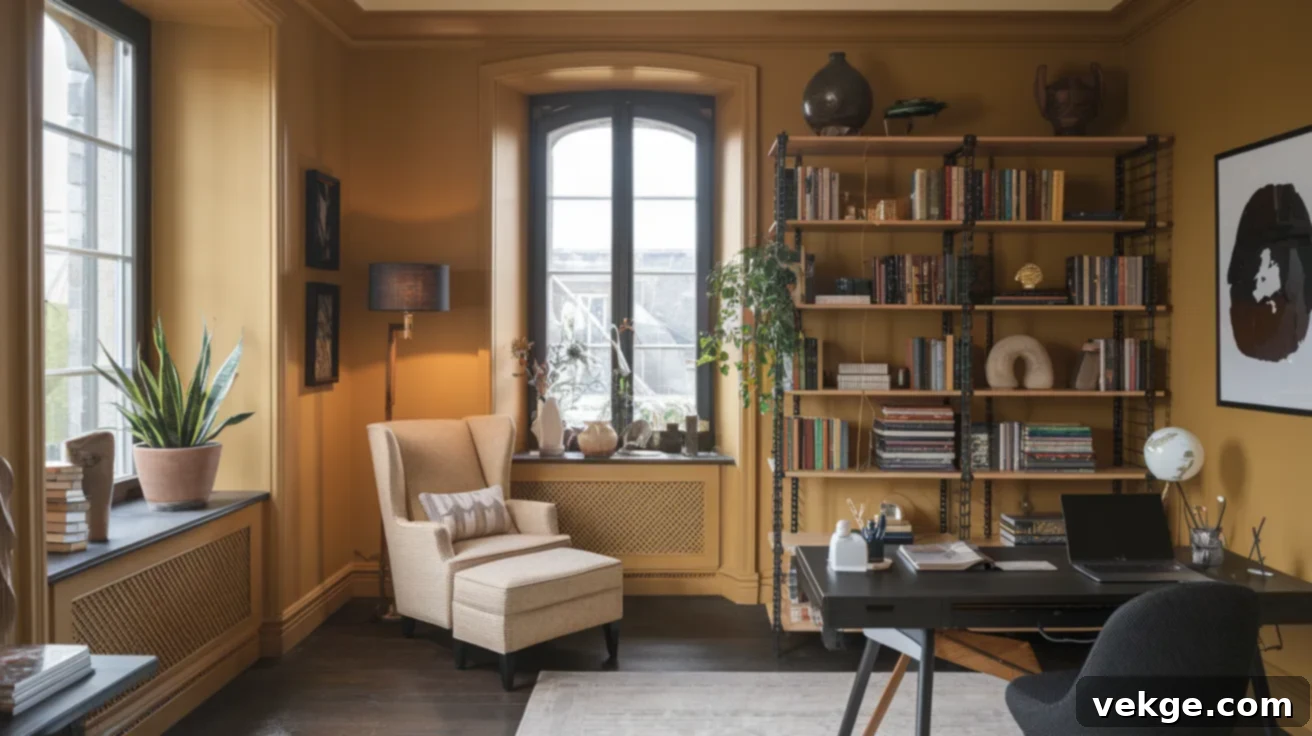
Muted mustard introduces a delightful golden warmth that expertly highlights the depth and character in dark brown floors without ever competing visually. This subdued yellow creates a sunny and cheerful atmosphere without the intensity or overwhelming vibrancy of brighter yellow options. Its earthy undertones ensure it pairs naturally and beautifully with wood tones, enhancing their warmth while injecting distinctive character onto your walls.
Muted mustard is excellent for creating a focal point that naturally draws the eye upward, effectively balancing the visual weight of dark floors. It’s a wonderful choice for living rooms, dining rooms, or entryways where you want to make a statement that is both sophisticated and inviting. This color combination exudes personality and a cozy, artistic flair.
11. Navy Blue
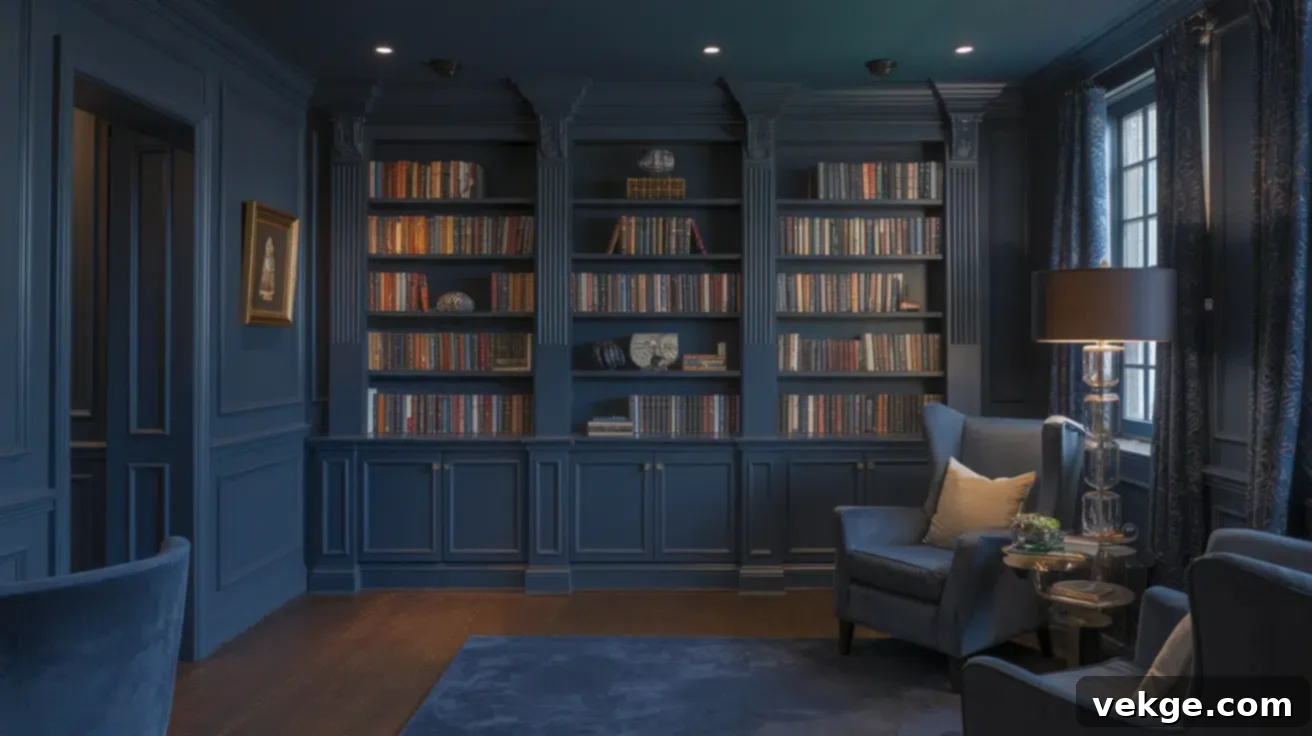
Navy blue walls create a dramatic sense of depth and undeniable sophistication that beautifully complements dark brown floors through a sophisticated tonal harmony. This rich, deep color instantly elevates spaces, imparting a luxurious yet classic quality. The subtle blue undertones in navy provide a compelling contrast to the warm browns of your flooring, preventing the combination from feeling overly heavy or oppressive.
Navy blue works particularly well in rooms that receive abundant natural light, where its intensity can be truly appreciated without making the room feel too dark. It’s also an outstanding choice for an accent wall, balanced by lighter nearby surfaces, to create a striking focal point. Ideal for studies, formal living rooms, or elegant bedrooms, navy blue and dark wood floors deliver a powerful statement of style and refined taste.
12. Charcoal Grey
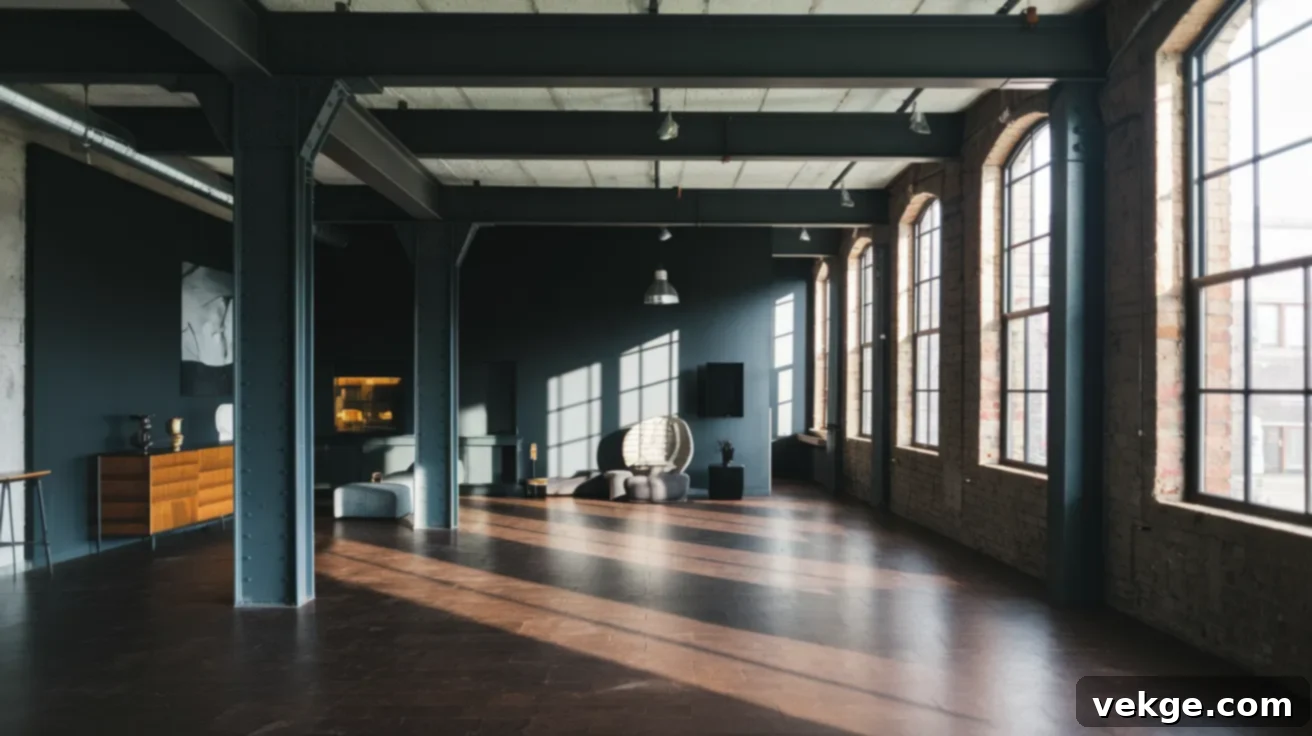
Charcoal grey walls establish an understated yet impactful backdrop that allows the rich texture and deep tones in dark brown floors to become prominent design features. This sophisticated near-neutral creates a contemporary and chic foundation against which furniture, artwork, and vibrant accessories can truly shine. The cool undertones inherent in charcoal provide a subtle contrast to the warmth of dark wood, generating depth without jarring visual differences.
This pairing works best in spaces with good lighting—both natural and artificial—and when balanced with strategic lighter elements like rugs, upholstery, or curtains to provide visual relief. Charcoal grey is excellent for modern living rooms, industrial-style spaces, or bedrooms seeking a moody yet refined atmosphere. It speaks to a design aesthetic that is both bold and thoughtfully composed.
13. Forest Green
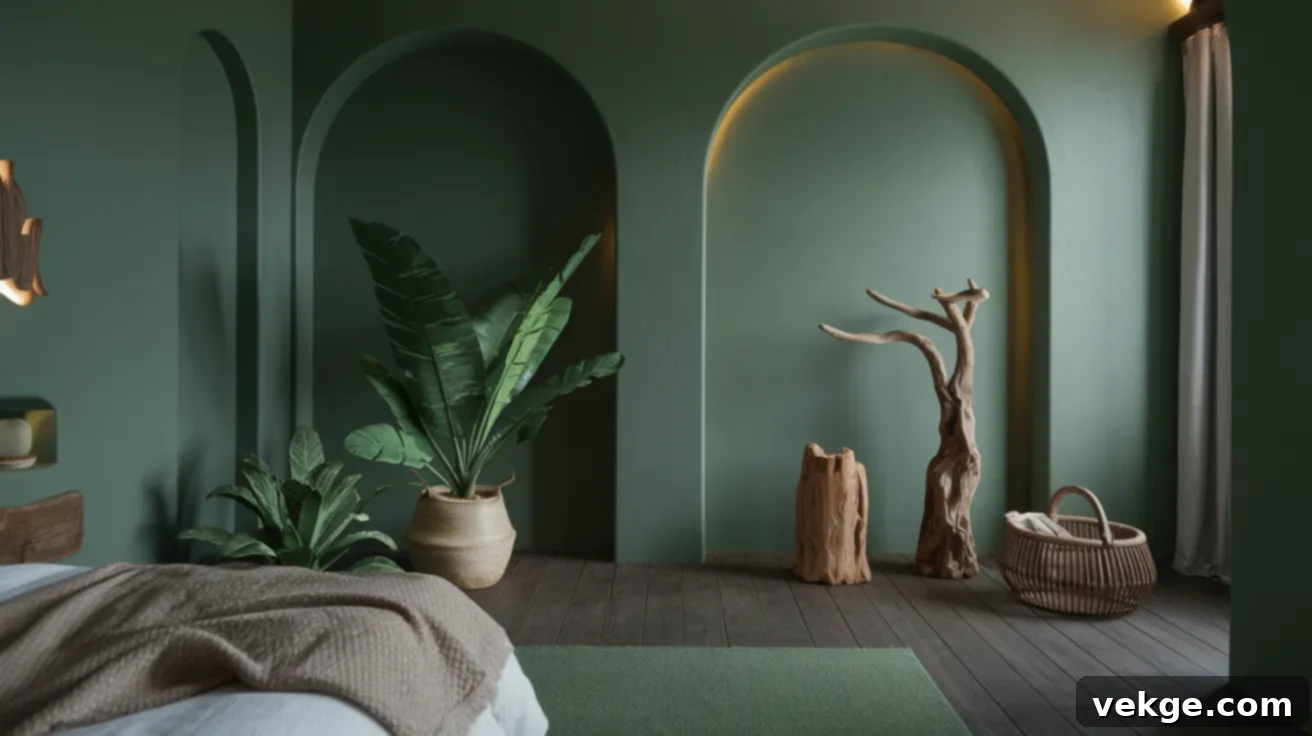
Forest green walls create a captivating, nature-inspired cocoon that harmonizes impeccably with the organic quality of dark brown wood floors. This deep, saturated green introduces a vibrant energy without relying on brightness, thus maintaining a wonderfully serene and grounding atmosphere. It’s a color that evokes the tranquility and richness of a dense woodland.
One of the most intriguing aspects of forest green is its ability to draw out subtle red or orange undertones often present in brown flooring, forging an unexpected yet highly complementary relationship. This color feels both current and timeless, adding significant character to a space while honoring the natural elements found in wood. Perfect for studies, master bedrooms, or accent walls, forest green offers a sophisticated depth that calms and invigorates.
14. Deep Plum
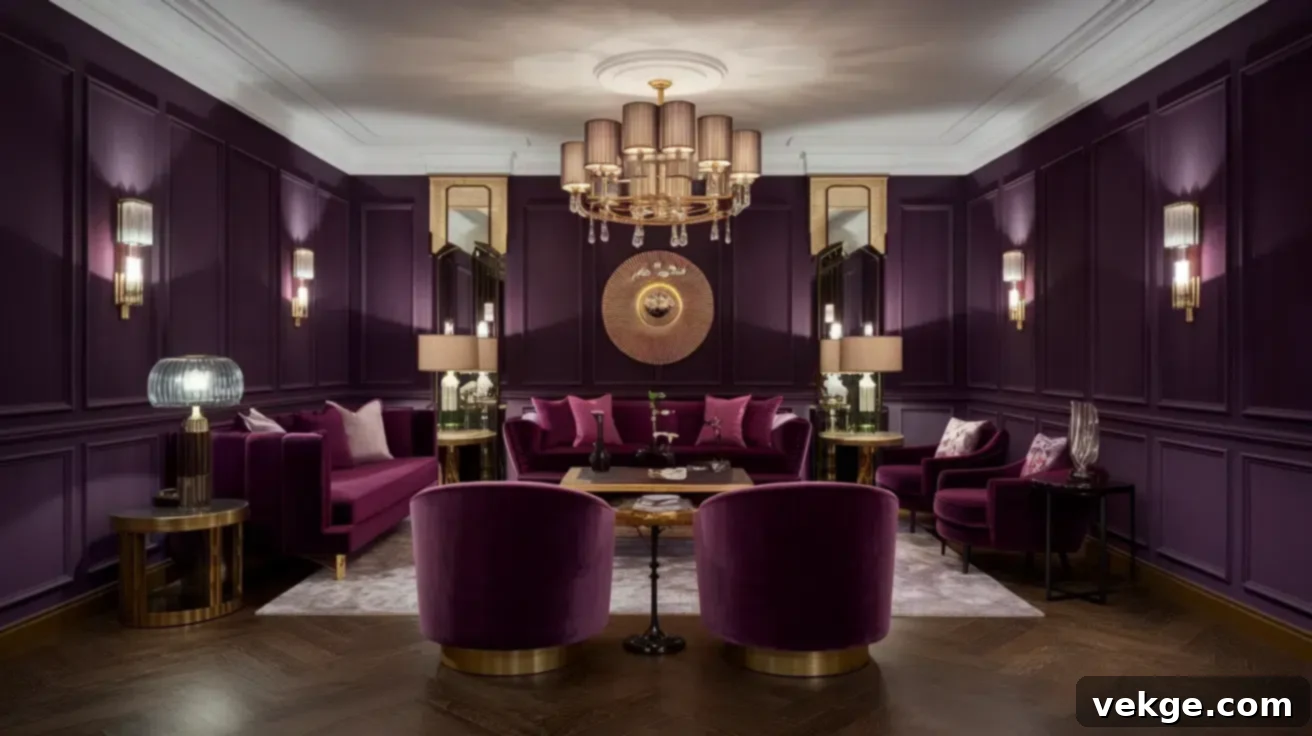
Deep plum walls introduce a rich, luxurious, and often unexpected color that pairs surprisingly well with dark brown floors. This complex purple hue possesses enough inherent warmth to connect seamlessly with wood tones, while simultaneously adding a distinctive and sophisticated character to the room. It’s a choice that exudes confidence and refined taste.
Deep plum creates a truly luxurious backdrop that makes furniture, especially lighter-toned pieces, stand out vividly. When thoughtfully balanced with adequate lighting and perhaps some metallic accents, plum walls and dark floors craft intimate, memorable spaces brimming with depth, personality, and a touch of the dramatic. Consider this sophisticated shade for dining rooms, elegant powder rooms, or master bedrooms where you want to create a truly unique and opulent atmosphere.
15. Chocolate

Opting for chocolate walls that closely match dark brown floors creates a bold, monochromatic effect that feels both incredibly cohesive and strikingly sophisticated. This approach bathes the entire space in rich, enveloping color, allowing architectural features, textured furnishings, and vibrant artwork to become the primary focal points. The seamless transition from floor to wall establishes a strong, unified foundation that gives a sense of boundless luxury.
This pairing works best when combined with thoughtful layering of lighting and the strategic introduction of occasional lighter elements, such as white trim, light rugs, or bright accessories, to provide crucial visual relief and prevent the space from feeling too enclosed. Chocolate walls with dark floors are ideal for creating intimate, cozy snugs, opulent bedrooms, or dramatic dining rooms where a sense of deep comfort and elegance is desired.
16. Snow White
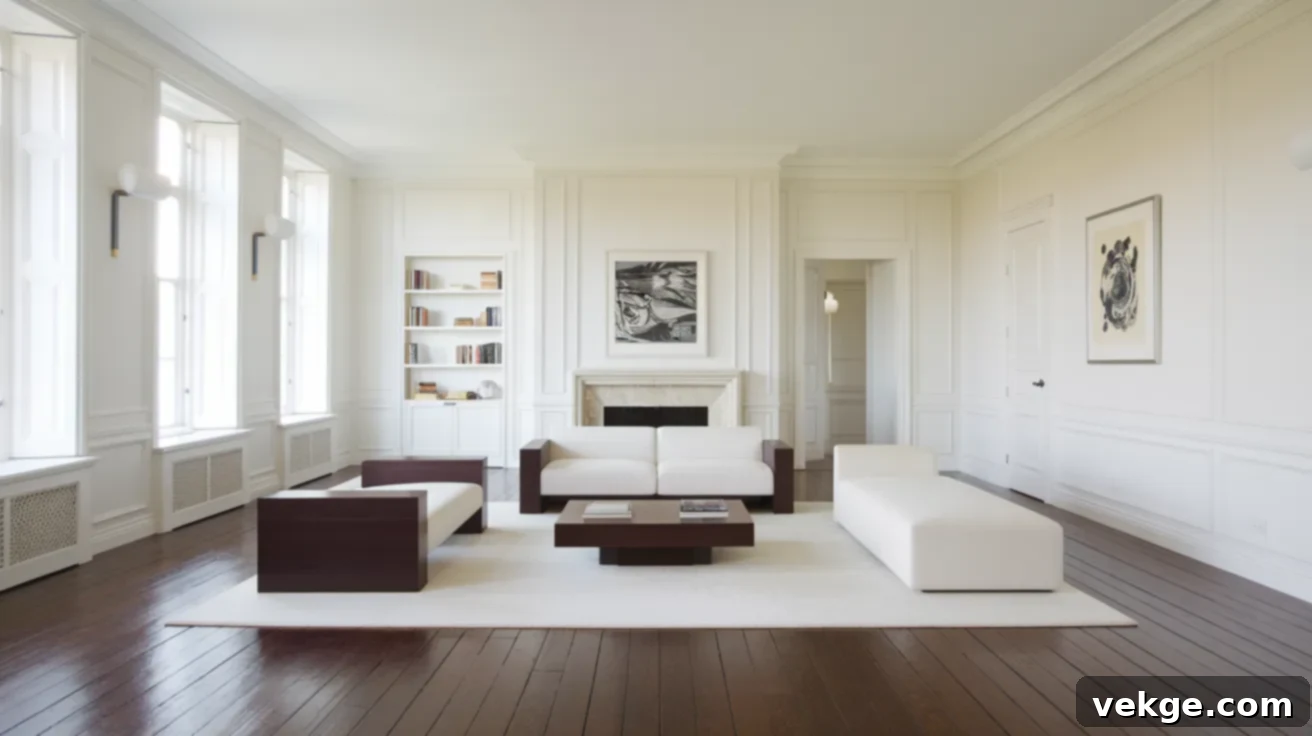
Snow white walls create the maximum possible contrast with dark brown floors, dramatically highlighting the inherent richness of the wood grain and its deep, earthy color. This crisp, bright white is a powerful reflector of light, making rooms feel significantly larger, more open, and undeniably airy. The stark difference between the dark floor and light walls creates sharply defined lines that emphasize the room’s architecture and the elegant silhouettes of your furniture.
Snow white provides a clean, gallery-like backdrop that transforms both your dark flooring and carefully chosen decorative elements into true statement pieces. It’s a timeless choice for modern, minimalist, or Scandinavian-inspired interiors, offering a fresh and invigorating aesthetic. This classic pairing is perfect for any room where you want to achieve a bright, expansive, and high-impact visual dynamic.
17. Crisp Black + White Contrast
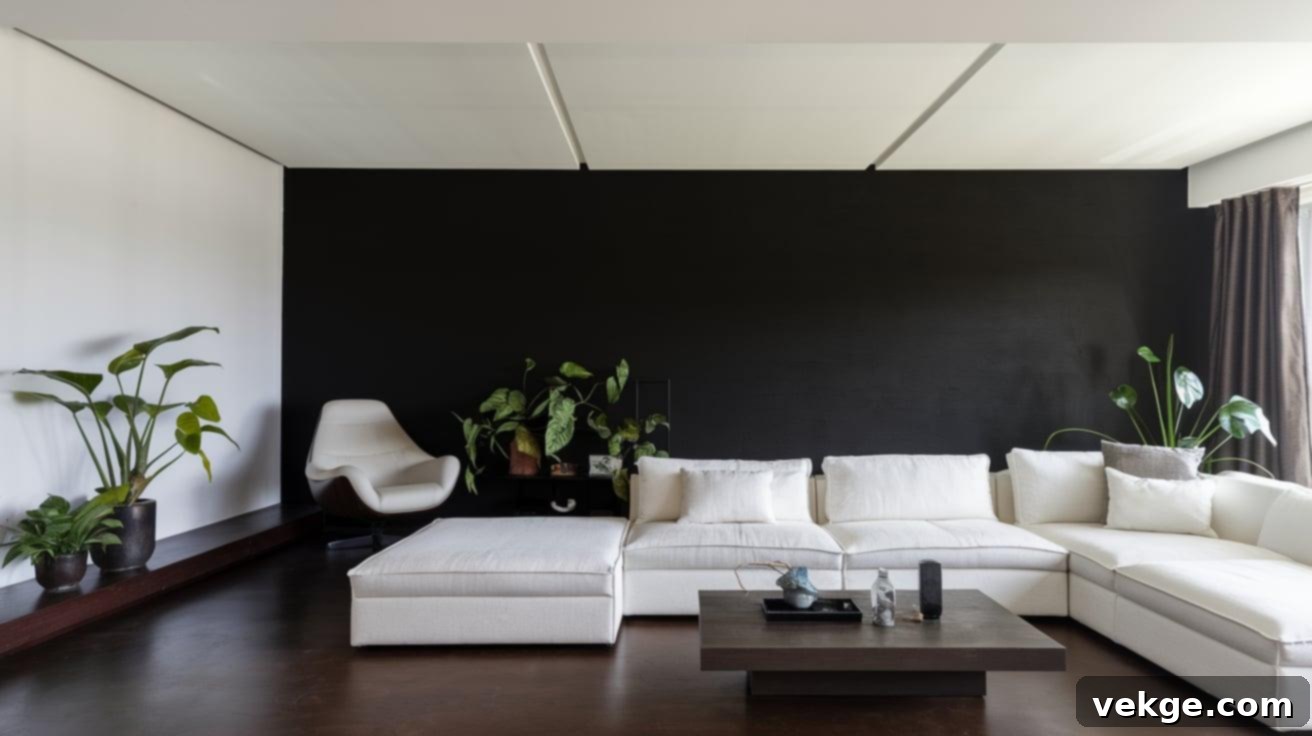
Combining black accent walls with expansive white surfaces creates a truly dynamic and sophisticated contrast that beautifully complements dark brown floors, especially in modern and contemporary spaces. This high-contrast approach cleverly positions the dark flooring as a crucial middle tone, effectively bridging the visual extremes of black and white. The result is an interior that feels intentional, graphic, and incredibly stylish, with clearly defined zones and compelling focal points.
This bold pairing works best in spaces with good architectural proportions and when used strategically, rather than throughout an entire room. For instance, a black accent wall in a living room with white surrounding walls and dark floors creates a powerful statement without overwhelming. This combination is ideal for adding drama, depth, and a touch of avant-garde elegance to living areas, entryways, or even expansive bedrooms.
18. Cool Slate Blue
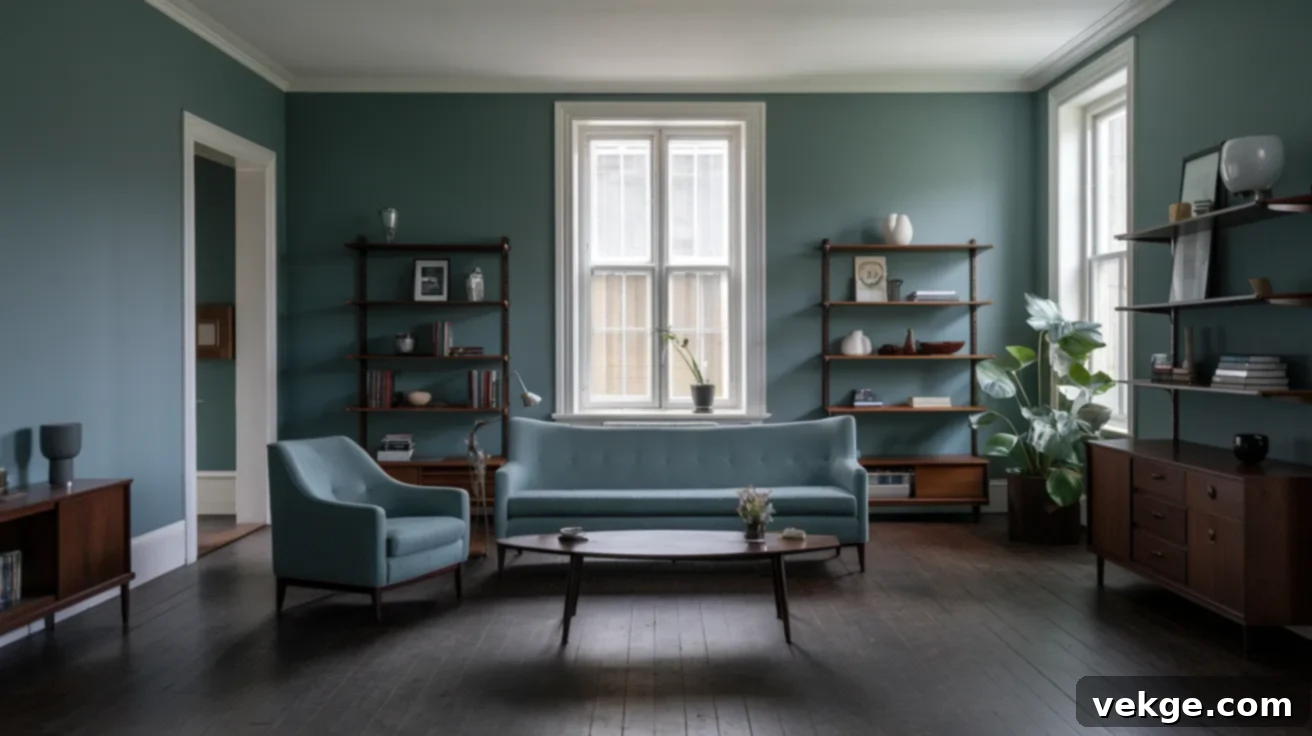
Cool slate blue walls provide a subtle yet distinctive contrast with dark brown floors while adding a wonderful dimensional depth to your space. This sophisticated mid-tone blue-grey possesses a receding visual quality, making rooms feel larger and more serene than pure neutrals might, while still offering significant visual interest. The inherent coolness of slate blue perfectly balances the warmth found in brown wood, creating a complete and harmonious color story.
Slate blue is remarkably adaptable to changing light conditions, appearing more intense and vibrant in bright, sunlit rooms, and more subdued and contemplative in dimmer spaces. This makes it a versatile choice for a variety of rooms. Ideal for studies, coastal-inspired bedrooms, or contemporary living areas, cool slate blue paired with dark floors creates a refined, calming, and effortlessly stylish atmosphere that truly stands out.
19. Classic Buttercream

Classic buttercream walls offer a gentle, inviting contrast that elegantly highlights dark brown floors without creating any stark visual boundaries. This warm, subtly yellow-tinted neutral enhances the natural richness of wood tones while simultaneously brightening the overall space. The color creates a soft, sunny glow that makes rooms feel inherently welcoming, established, and incredibly comfortable.
Buttercream works exceptionally well in traditional and transitional settings, bringing a classic warmth that complements both antique and contemporary furniture placed on dark floors. It’s an excellent choice for living rooms, dining areas, or children’s rooms where a cheerful, nurturing, and timeless aesthetic is desired. This pairing offers a sense of enduring charm and relaxed sophistication, making any house feel more like a home.
20. Sherwin-Williams “Alabaster” (SW 7008)
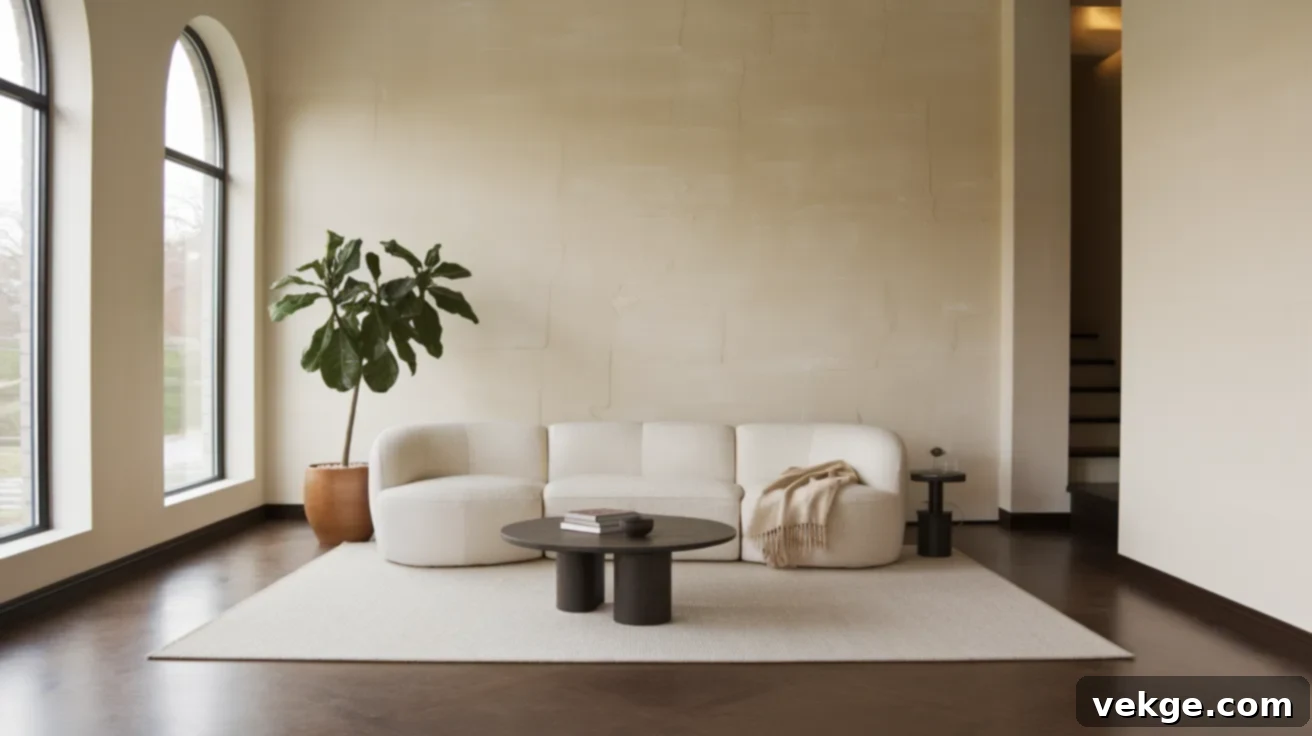
Sherwin-Williams “Alabaster” (SW 7008) is a highly favored, soft, warm white that interior designers frequently recommend and pair with dark brown floors. This remarkably versatile shade contains subtle yellow and barely-there beige undertones that beautifully complement the warmth of wood without ever appearing too stark, cold, or clinical. It’s the perfect alternative to a pure white that can sometimes feel too harsh.
“Alabaster” maintains a desirable brightness without producing glare, making rooms feel open, airy, and yet wonderfully comfortable. Its gentle character holds true across various lighting conditions, maintaining its inviting glow from morning’s first light through evening illumination. Ideal for virtually any room in the house, “Alabaster” creates a serene and elegant backdrop that allows dark floors to truly shine.
21. Benjamin Moore “Pale Oak” (OC-20)
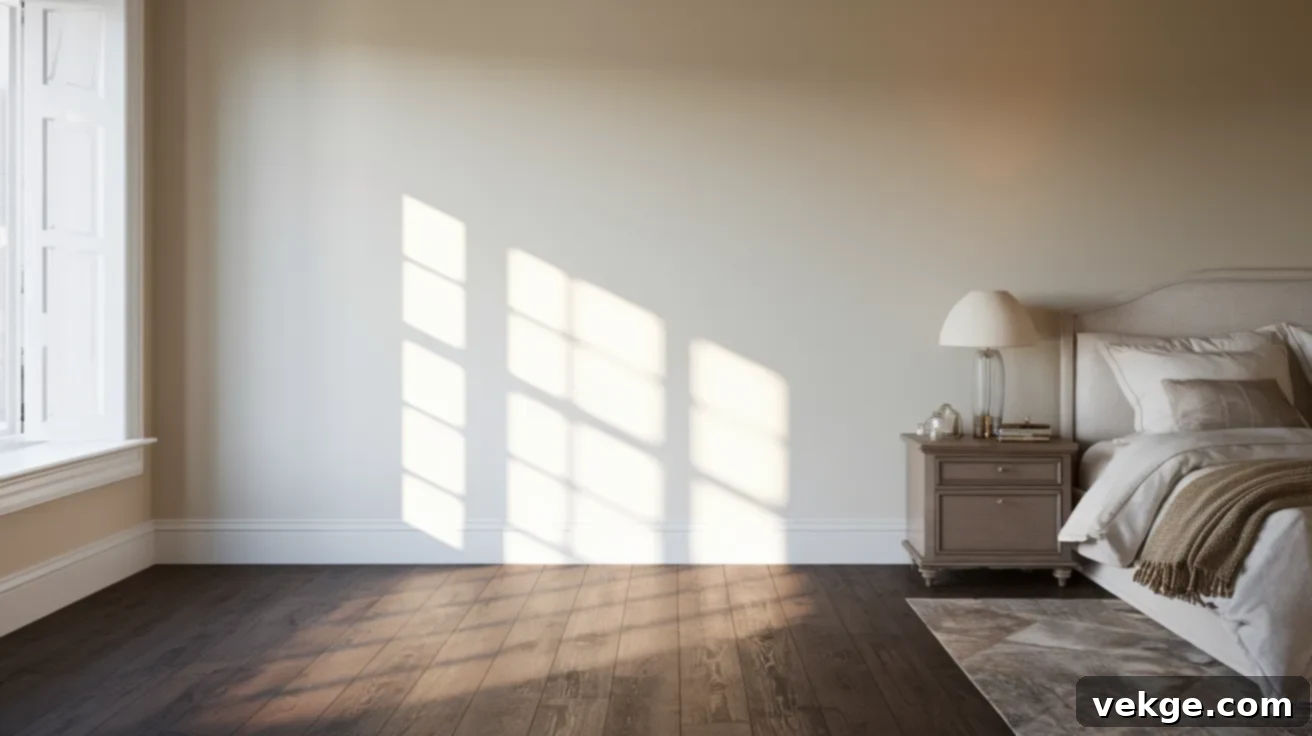
Benjamin Moore “Pale Oak” (OC-20) provides a wonderfully complex neutral that profoundly enhances dark brown floors with its subtle depth and sophisticated undertones. This popular greige shade contains delicate hints of green, grey, and beige that respond beautifully and dynamically to changing light throughout the day. Designers consistently choose this color for its remarkable ability to feel both current and classic, making it highly versatile across an extensive range of design styles, from traditional to contemporary.
“Pale Oak” creates a sophisticated and harmonious backdrop that allows the richness of dark flooring to stand out gracefully, all while maintaining a cohesive and inviting overall palette in the space. It’s an excellent choice for open-concept living areas, bedrooms, or any room where you desire a refined, understated elegance that adapts to its surroundings with quiet confidence. “Pale Oak” is a testament to the power of a perfectly balanced neutral.
How Natural and Artificial Light Affects Wall Colour and Dark Brown Floors
Understanding the interplay between light and color is paramount when selecting wall shades for rooms with dark brown floors. Lighting is not merely about illumination; it’s a powerful design element that can dramatically shift the mood, tone, and overall feel of a room. The way natural and artificial light interacts with your chosen paint color and the inherent qualities of your dark flooring can profoundly influence your perception of the space.
Here’s a detailed look at how different types of lighting affect color pairings with dark brown flooring:
- Warm Light (from incandescent bulbs, or east/west-facing windows in the evening): This type of light adds a beautiful golden glow to wall colors like beige, cream, buttercream, and even some warmer greiges. It enhances the coziness and inviting atmosphere of a space, making it perfect for living rooms, bedrooms, and dining areas where comfort is key. It also accentuates the warm undertones in your dark brown floors.
- Cool Light (from fluorescent or LED bulbs with high Kelvin, or north-facing windows): Cool light sharpens tones in colors such as pale grey, slate blue, and some taupes. It helps maintain a crisp, bright, and often modern aesthetic, which is great for kitchens, bathrooms, workspaces, or any area where clarity and alertness are desired. For dark floors, cool light can highlight their cool undertones (if present) or provide a sharp contrast to their warmth.
- Morning Light (East-Facing Windows): Originating from the east, morning light tends to be brighter and cooler. It highlights the cooler undertones in wall colors, lending the room a calm, fresh, and invigorating vibe. This light can make light greys appear crisper and blues more vibrant. For dark floors, it can bring out cooler notes in the wood, making the space feel more contemporary and less heavy.
- Evening Light (West-Facing Windows): As the sun sets in the west, evening light becomes warmer, softer, and more golden. This light beautifully softens colors, adding significant warmth to walls and deepening the brown tones in your flooring. It transforms spaces into cozy, inviting havens, ideal for relaxation and entertaining. This light often brings out the rich, warm character of dark wood.
- North-Facing Light: Rooms with north-facing windows receive indirect, naturally cooler, and more muted light throughout the day. To counteract this chill, it often works best to use warmer wall colors such as creamy whites, soft beiges, or even light peaches to add warmth and prevent the room from feeling flat or cold. This can also help balance the cool influence on dark floors.
- South-Facing Light: South-facing rooms are bathed in steady, warm, and bright light all day long. This abundant warmth helps to blend wall and floor colors more smoothly, creating a cohesive look without harsh contrasts. You have more flexibility with color choices here, as even cooler tones will feel balanced by the natural warmth. This light truly allows the richness of dark floors to shine without feeling oppressive.
Understanding how light interacts with both paint and flooring is crucial for choosing shades that feel just right and consistent—no matter the time of day or the specific direction of your windows. Always test paint samples on your walls and observe them at different times of day to ensure the desired effect.
Conclusion: Harmonizing Your Home with Dark Brown Floors
Ultimately, choosing the right wall colors for dark brown floors isn’t about rigid rules; it’s about understanding the principles of color and light, and then finding what truly resonates and works best within your unique space. You now have a comprehensive understanding of how various colors and different lighting conditions interact to create balance, warmth, contrast, and depth in your home.
We encourage you to think critically about how each suggested color feels in your home. Don’t be afraid to experiment! Always try a few paint samples on your walls and observe them throughout the day to see how they react to different lighting conditions. Remember, even small changes in undertone can make a significant difference in the overall ambiance of a room.
Dark brown floors are inherently strong, stylish, and offer a powerful design foundation. Embrace their richness and don’t shy away from mixing in either contrasting lightness or complementary softness with your wall choices. The key is to maintain a feeling of natural flow, comfort, and personal expression within your living environment. With these insights, you’re well-equipped to create a harmonious and beautiful space.
Want more ideas and inspiration that fit your unique style? Be sure to check out our other home design blogs for easy tips, room-by-room color inspiration, and creative solutions. You’ll find everything you need to confidently work with dark brown flooring and beyond to achieve your dream interior.
Frequently Asked Questions About Wall Colors and Dark Brown Floors
Can I use dark wall colours with dark brown floors?
Yes, absolutely! Dark walls can work beautifully with dark brown floors to create sophisticated, intimate, and cozy spaces. Colors like navy blue, forest green, charcoal grey, or even deep plum can be stunning. The key is to balance the depth with proper lighting (both natural and artificial), lighter-colored furniture, and strategic accents (e.g., bright rugs, artwork, or metallic decor) to prevent the room from feeling too enclosed or heavy.
What wall colour makes a room with dark brown floors look bigger?
To make a room with dark brown floors feel more expansive, opt for bright, light-reflecting wall colors. Bright whites (like Snow White or Sherwin-Williams Alabaster), creamy neutrals, and pale grays are excellent choices. These lighter colors reflect light throughout the room, visually pushing the walls back and creating the illusion of more space and an airy atmosphere. Ensure good lighting to maximize this effect.
Should my wall colour match my floor colour?
Generally, it’s best to avoid an exact match between your wall color and floor color, especially if both are dark brown. Too much similarity can make a room feel monotonous, flat, and lack visual interest, creating a “brown box” effect. Instead, aim for complementary tones that create a pleasant contrast or subtle harmony. For instance, if you have very dark brown floors, a lighter shade from the same color family (like a warm beige) or a contrasting neutral (like a light greige or pale blue) will provide more depth and dimension than a direct match.
